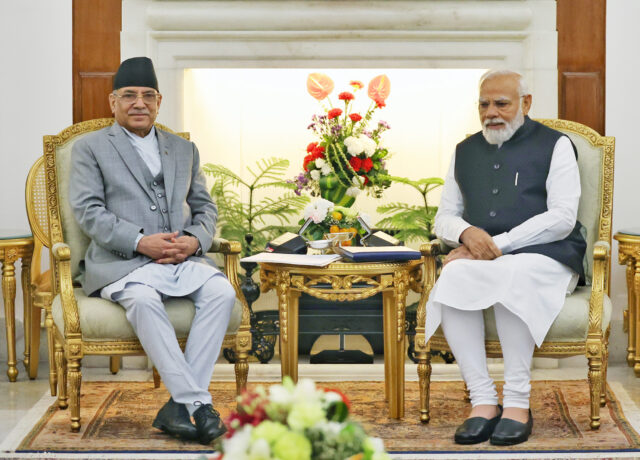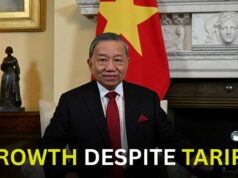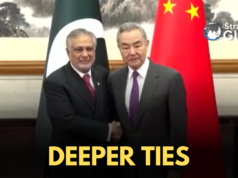KATHMANDU: Some of Nepal’s major news outlets portray India in a more negative light compared to China, says a report by a Kathmandu-based think tank. The Centre for Social Inclusion and Federalism warns that journalistic bias combined with nationalism and lack of information is contributing to this negative portrayal of India.
The report titled ‘Geopolitics and Information Disorder in Nepal’, which came out recently, found that reporting on China and the U.S. also tended to be negative although India led the pack.
The report was based on analysis of 10,000 news stories and articles published or posted in 15 Nepali national dailies and major online platforms from February to June 2023. Artificial intelligence such as the Da-Vinci model and customised coding were used, the think tank said.
The articles were examined for bias, false connections, false context, misleading representation, imposture, manipulated context, fabricated content and political use of sensitive information. Based on this data, positive or negative scores for media coverage of each country were generated and India ranked consistently higher.
The negative reporting on India cited sources biased against that country. Articles or reports that were carried or posted lacked adequate evidence and important details were missing. “Incorrect use of data also seems to impact how India is portrayed,” the report says. “More misleading headlines portray more negative narratives about India.”
With respect to the U.S., media coverage also betrayed bias and flawed arguments. “More negative portrayals of the U.S. associated with more misleading or sensational headlines,” it says.
A case in point is last year’s reporting of the Millennium Challenge Corporation Compact, which became very controversial in Nepal. Media coverage was replete with ambiguities, half-truths and an overtly skewed narrative, according to the report. The U.S. had accused the Chinese of running a disinformation campaign to discredit the MCC even though the $500 million Compact grant was only to build high capacity transmission infrastructure and improve roads.
Curiously, the study noted that while there was negative reportage of China that included distortions, the overall narrative was more favourable. “Sensationalist headlines are less common in positive stories about China,” says Ajay Bhadra Khanal, research adviser at the think tank, pointing out that “we found a lot of information gaps. Despite lack of adequate information, China has been portrayed positively in Nepali media compared to India and the United States. In the case of India and the U.S., the information gap about their activities led to negative portrayal of them.”
During focussed group discussions with journalists, the research team found they had individual political and ideological inclinations; there was a challenge of finding neutral experts for comments and analysis; nationalistic sentiments influenced reporting; not to leave out the role of editors’, media owners and financiers and the not-so-subtle influence of China.
Khanal, who was editor of several Nepali media outlets including The Himalayan Times, said that the report indicated the influence of the broader political environment and the social and psychological environment.
“For example, anti-India politics thrives in Nepal whose reflection can be seen in the media coverage,” Khanal said. “Media themselves don’t generate content and they do reports about the politicians and their negative comments about India leads to negative portrayal of India.”
Nepal’s border dispute with India over Kalapani, Lipulekh and Limpiyadhura has seriously impacted bilateral ties. “The reports about India’s alleged encroachment on Nepali lands and perceived Indian intervention in government changes in Nepal are making headlines in Nepal and they present India in a negative light,” said Khanal.
“Nepal’s Leftist forces have long been capitalising on anti-Indianism to garner public support,” notes Lok Raj Baral, former ambassador to India, adding that “the then autocratic Panchayat regime under direct rule of the King, also promoted anti-Indianism when India was providing political refuge to the opposition leaders in the past. These factors contributed to the prevalence of deep rooted anti-Indian sentiment in the psyche of the Nepali public and it is difficult to erase such sentiment.”
The deep-rooted bias against India is reflected in the actions of politicians and the media whenever a dispute arises. “As a close neighbour, there are a lot of problems with India and they are reported in the media, contributing to negative portrayal of India,” said Baral.
China was able to avoid this since its engagement with Nepal is more recent. China has reaped considerable advantage from the fact that its relationship with Kathmandu avoided the extremes of excessive intimacy and complete indifference as bilateral relations were limited. “Now the Chinese are proactive in shaping Nepal’s politics and Chinese nationals are also involved in a lot of criminal activities in Nepal and they have also started to get a lot of negative media coverage in the recent years,” says Baral.
China allegedly tried to bring together leftist forces when erstwhile CPN (UML) and CPN (Maoist Centre) merged in 2018 to form the Nepal Communist Party (NCP). The unified party was dissolved after a Supreme Court verdict in March 2021. China is also accused of working to bring the two groups together, and they even formed a government in December last year. The alliance did not last more than two months.
Khanal’s solution to get over the negative portrayal of India: “If more discussions take place on bilateral economic cooperation, trade and investment, negative portrayal of India in Nepali media can recede gradually.”
(The author is a Kathmandu-based journalist with long experience in covering local political, economic and social issues. Views expressed in this article are personal.)





